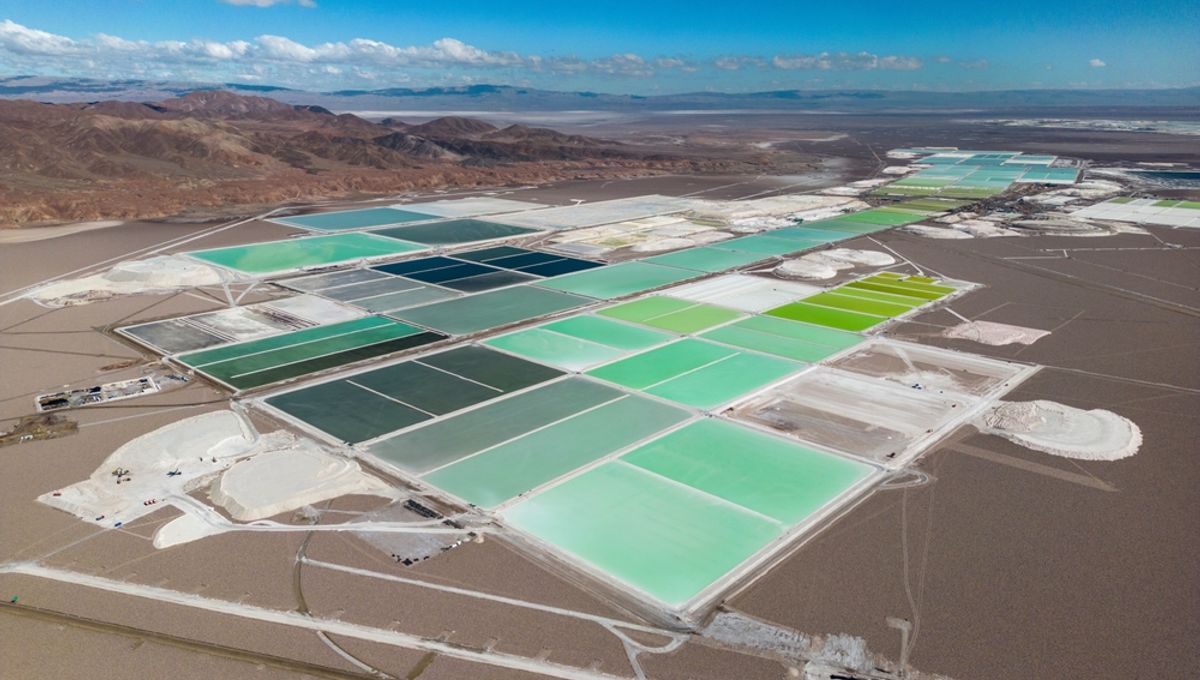
The planet’s largest-known lithium deposit may have been found hiding beneath an ancient supervolcano along the Nevada–Oregon border in the US. Given the skyrocketing demand for lithium, this deposit could be a treasure trove – although obtaining it could come with a bunch of challenges and dangers.
An estimated 20 to 40 million metric tons of lithium is thought to be contained within sediments of the McDermitt caldera, a caldron-like depression that formed as a result of the volcano erupting and then collapsing on itself. The caldera is found in southeastern Oregon and northern Nevada, taking up a vast portion of land around 45 kilometers (28 miles) long and 35 kilometers (22 miles) wide.
If this estimate is correct, it would mean the McDermitt caldera holds the record for the biggest lithium deposition in the world, beating Bolivia’s salt flats, which hold around 23 million tons.
“If you believe their back-of-the-envelope estimation, this is a very, very significant deposit of lithium,’ Anouk Borst, a geologist at KU Leuven University and the Royal Museum for Central Africa in Tervuren, Belgium, told Chemistry World.
“It could change the dynamics of lithium globally, in terms of price, security of supply and geopolitics.”
In a new study by the Lithium Americas Corporation, volcanologists and geologists attempt to explain how this massive lithium deposit was formed.
Their theory goes that the deposit emerged after a significant eruption approximately 16.4 million years ago which pushed the minerals from deep underground to the surface, leaving a rich scattering of lithium-rich smectite clay. The eruption and its collapse left behind faults and fractures, allowing lithium to seep up toward the surface. This intense process transformed a mineral called smectite into illite, which can sometimes be processed for lithium.
They highlight that lithium isn’t uniformly spread about the caldera, however. The lithium-rich zone has only been identified in the southern half of the caldera around Thacker Pass and to the north in the Montana Mountains.
Now Lithium Americas Corporation has worked out how and where the lithium-rich deposits are likely to have formed, it could ramp up efforts to mine the area.
“That’s really helpful to change exploration strategy. Now we know we have to stick in the Thacker Pass area if we want to find and mine that illite,” Tom Benson, author of the new study from Columbia University and the Lithium Americas Corporation, told Popular Science.
The feasibility and impact of harvesting this metal is a big question. Lithium, along with cobalt, is one of the fundamental ingredients needed to make rechargeable batteries – like the ones in electric cars, as well as your smartphone and laptop – that are going to become an invaluable technology for the planet’s shift to renewable energy. Some estimates suggest global demand for lithium batteries could grow fivefold by 2030.
However, many are concerned about the risk of lithium exploration in the Mcdermitt Caldera. An arm of the Lithium Americas Corporation wants to build an open-pit lithium mine here with a projected area of 17,933 acres. This plan has been heavily contested by some environmentalists and local Indigenous people, who argue the project will turn their beloved land into an industrialized mining district.
“The Caldera holds many first foods, medicines, and hunting grounds for tribal people both past and present. The global search for lithium has become a form of ‘green’ colonialism. The people most connected to the land suffer while those severed from it benefit,” People of Red Mountain, an Indigenous-led organization, said in a statement.
The study is published in the journal Science Advances.
Source Link: World's Largest Lithium Trove Found Under Ancient Volcano In US